Salamander
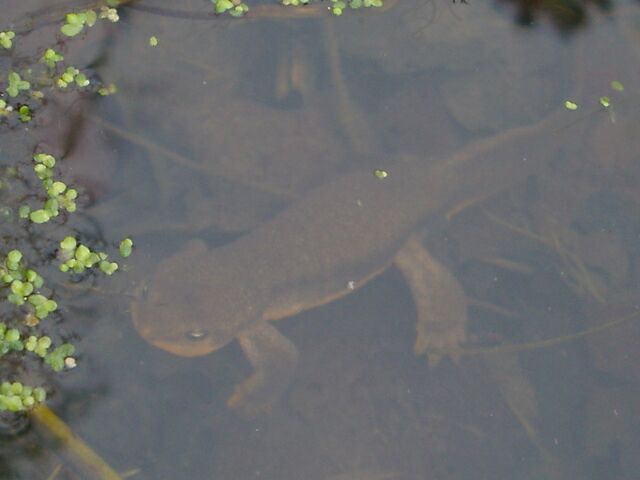 Dennis Deck.
Dennis Deck.
Roughskin Newt.
Little information is available about salamanders in the traditional tracking guides. James Halfpenny's
Scats and Tracks of the Pacific Northwest (Falcon Guide series) includes the Tiger Salamander
but that is about it. It is necessary to turn to specialized guides for information.
For the Pacific Northwest, try the excellent field identification guide Amphibians of Oregon,
Washington, and British Columbia, by Corkran and Thoms (1996). This guide offers extensive
information about range, habitat, and even toe pattern. There are also a couple regional photo
guides on the Internet worth investigating such as one by the "Salamander Wrangler".
Salamanders occur throughout the region, including the arid east side of the Cascades, and frequent
fast flowing streams as well as quiet water habitats. Some characteristics to look for are tail drag,
often oscillating back and forth, and an ambling diagonal stride (front foot registers ahead of hind foot).
So far I have only encountered one set of tracks.
Tracks
I discovered this set of tracks along the East Fork of the Hood River at about the 3,500 foot
level of Mt Hood near Portland, Oregon. As the water levels dropped in mid summer for this glacial
stream, fine silt was collected in a few places. Frogs tracks were also found nearby and worm trails
criss-cross the area.
An ambling stride, tail drag with slight oscillation, and 4F5H toe pattern seem consistent
with salamander. Although the area (high gradient glacial stream) did not match my preconception
about salamander habitat, Corkran and Thoms suggest several possible species consistent with
the size, habitat, and range including Cope's Giant Salamander and Pacific Giant Salamander.
According to John , a local specialist, a large specimen of the Northwestern Salamander is
the most likely candidate.
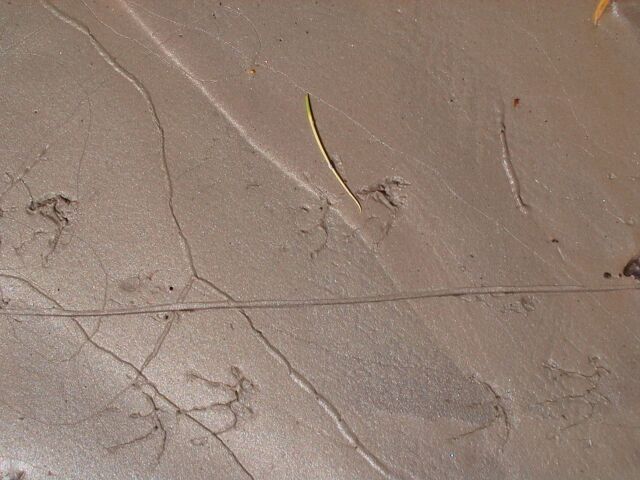
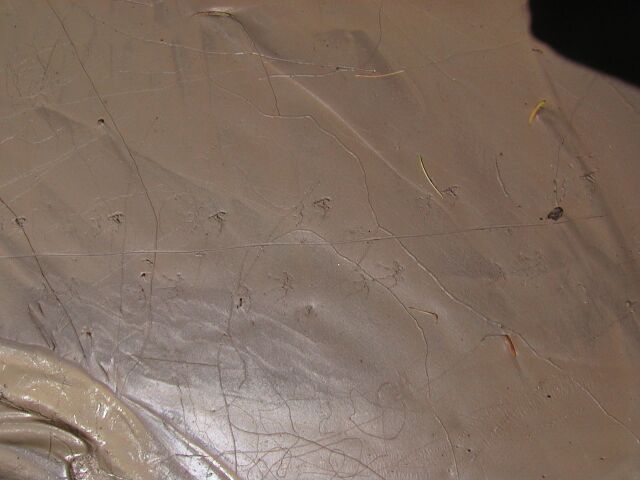
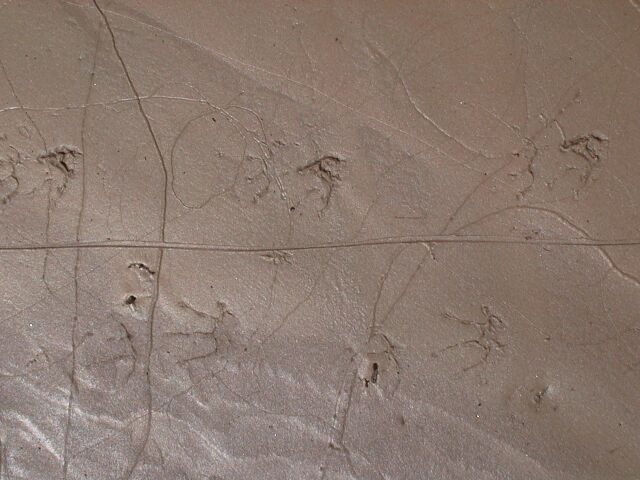

Naturalist Steve Engel made this cast of a roughskin newt.
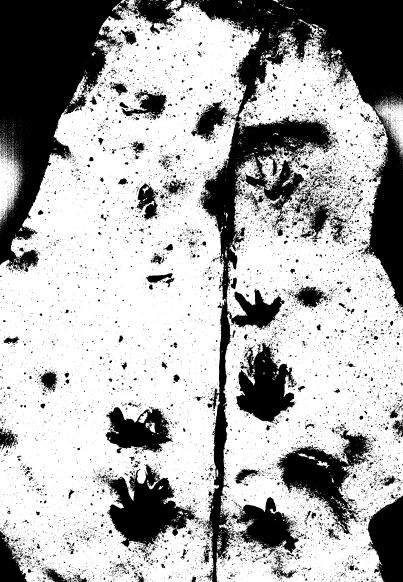
Return to Menu





 Dennis Deck.
Dennis Deck.